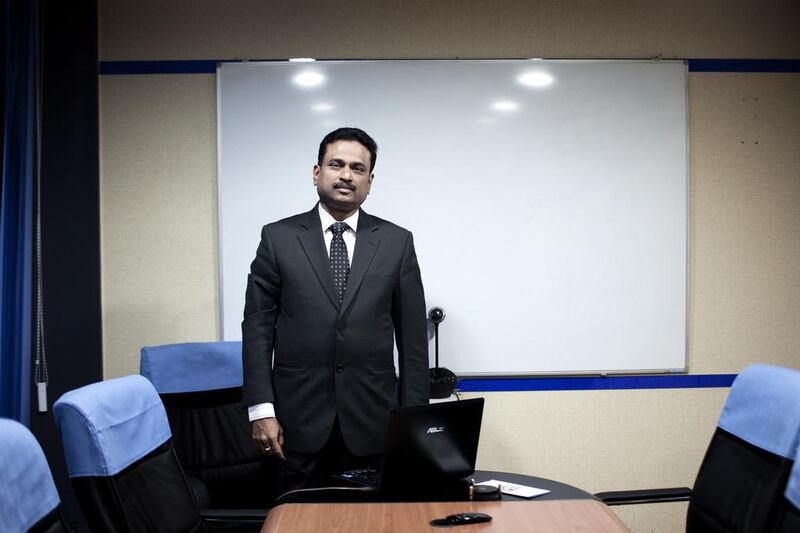Krishnan Ramachandran, chief executive of Barjeel Geojit Securities
Years trading: 24
Based: Dubai
What asset class and geography are you focused on?
We offer a diverse range of asset classes that includes equities, fixed income, commodities, currencies and real estate. We facilitate investments through stock exchanges, mutual funds and other trading and investment platforms. Through our platforms we channel investments predominantly into the Indian markets, apart from the major financial markets and destinations of the world.
What is the outlook for the year ahead?
The start to the year has been quite wobbly against the backdrop of falling commodity prices, led by crude oil. This, along with the sudden removal of the Swiss franc’s ceiling against the euro, has brought considerable volatility to the financial markets. The exception to this rule has been the Indian equity markets, which have been steadily moving north, buoyed by the sudden 0.25 per cent repo rate cut by the Reserve Bank of India. The Indian equity and debt markets both look attractive. The global markets are expected to be volatile for the time being considering the amount of macro data point adjustments. Last year was a great year for the Indian financial markets. The Nifty and Sensex provided returns of about 30 per cent, while the broader markets have been far higher. India stands out on account of its macroeconomic recovery, how it benefits from low crude prices and its good corporate earnings trajectory. Hopefully this will be the month for crude prices to stabilise and consolidate over the medium term. The global markets, however, present a very divergent state of affairs. On the one hand, there is an expectation of a hike in interest rates in the United States and United Kingdom. On the other, the euro zone and Japan will be going through a phase of quantitative easing. A strong US dollar brings with it low commodity pricing and low inflation. This will have a spiralling effect on many emerging markets, leading to a weakening of their currencies and consequently a weak stock market. This set of contradictory indicators, and the state of affairs is likely to bring about bouts of volatile market behaviour this year.
What are the main risks, either upside or downside, to the outlook?
The outcome of the forthcoming elections in Greece, the bond buying programme that the ECB has announced and the prospects of a hard landing of the Chinese economy are all factors that can contribute to the upside and downside of the markets.
What is the best investment at the moment?
Indian equity and debt markets are likely to outperform their global peers. There is a good case for the US markets to reestablish their credentials this year. In the near term, investors will have to be defensive in their overall exposure to the global markets and avoid any rash pursuit of gains, especially in the commodities and currency markets.
What was the best investment you were ever involved in?
India has always been a market of our conviction. This has paid us rich dividends over the past 18 months and continues to do so. Our efforts to promote systematic investment plans have been successful to neutralise market volatility in an efficient and proactive manner.
What was the worst?
Our exposure to some of the Bric economies during the 2007-2008 period were the most challenging. However, we were able to mitigate these investments through a periodic rebalancing of our client portfolios in the subsequent years.
Follow The National's Business section on Twitter






